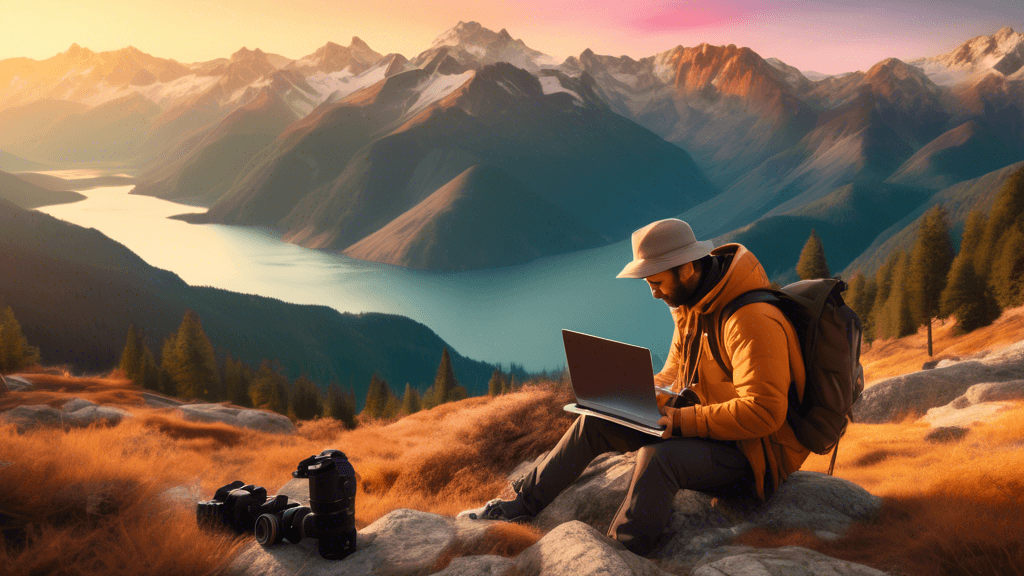
Elevate Your Landscape Photography: Mastering Post-Processing Techniques
Share
Introduction to Landscape Photography and Post-Processing
Landscape photography is not just about capturing a beautiful scene; it’s about conveying the profound impact of nature on our senses and emotions. For photographers passionate about the great outdoors, mastering post-processing techniques is crucial to translating what you see in nature into stunning visual stories. Whether you’re an amateur looking to improve your images or a professional aiming to enhance your technical skills, understanding post-processing is key in achieving breathtaking landscape photos.
The Role of Post-Processing in Landscape Photography
Before diving into specific techniques, it's important to understand the role of post-processing in landscape photography. In its essence, post-processing refers to the actions taken on a photograph after it has been captured, usually performed on a computer with photo editing software. But why post-process at all? The reasons are manifold:
- Enhancing Image Quality: Through techniques like sharpening and noise reduction, you can significantly improve the overall image quality.
- Correcting Exposure and Colors: Adjustments to exposure, highlights, shadows, and color balance can help replicate the real-life vibrancy and mood of the scene.
- Artistic Expression: Post-processing allows photographers to inject personal style and artistic flair into their works, creating unique interpretations of the natural landscape.
Essential Post-Processing Techniques for Landscape Photography
Here are several key techniques that can elevate the quality of your landscape images:
1. RAW Processing
Always shoot in RAW. This file format captures all data from the camera sensor, providing higher quality images and greater flexibility during editing. The first step in post-processing should be adjusting your RAW files in a converter to fix any exposure issues and tweak the white balance to reflect the true colors of the scene.
2. Dynamic Range Optimization
Landscape photography often suffers from exposure challenges, especially in scenes where both bright skies and dark foregrounds are present. Techniques like HDR (High Dynamic Range) merging or using graduated filters in editing software can help balance these extremes, ensuring all parts of your image are well-exposed.
3. Enhancing Colors
Color correction is crucial in reflecting the real beauty of the landscape. Tools such as Vibrance and Saturation in photo editors can be used wisely to enhance the natural colors without making the image look artificial.
4. Sharpening and Noise Reduction
Detail is key in landscape photography. Sharpening enhances the clarity of your photos, making details pop. On the flip side, high ISO settings often used in low light conditions can introduce noise. Effective noise reduction software can clean up your image while preserving as much detail as possible.
5. Creative Use of Filters
Beyond basic corrections, creative filters like radial, gradient, or tilt-shift can direct the viewer’s attention and enhance the overall composition. For instance, a graduated filter can darken a bright sky to draw focus towards an interesting land formation.
Advanced Techniques: Blending Modes and Focus Stacking
For those looking to go a step further in their post-processing journey, blending modes offer a powerful way to combine multiple exposures into a single, high-quality image. Focus stacking, where multiple images at different focus distances are combined, ensures that every part of your landscape is in sharp focus.
The Ethical Dimension of Post-Processing
While the power of post-processing is immense, it comes with the responsibility to maintain the integrity of the scene. Photographers should strive to use these tools to bring out the best in their photos without creating misleading representations of nature. As acclaimed photographer Ansel Adams once said, You don’t take a photograph, you make it. This encapsulates the essence of post-processing in landscape photography—not just capturing, but creating.
Conclusion and Call to Action
Mastering post-processing is a journey that can transform your landscape photography from ordinary to extraordinary. It’s about more than just correcting flaws; it’s about enhancing your vision and sharing the beauty of the landscape as you perceive it. So, why not start experimenting with these techniques today? See how they can change your approach to landscape photography and help you create truly stunning images that resonate with viewers and celebrate the natural world.





